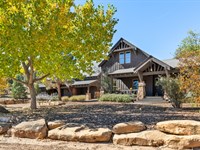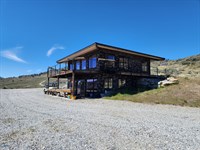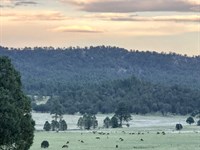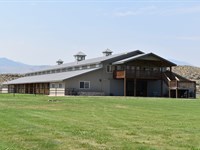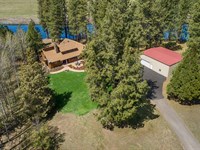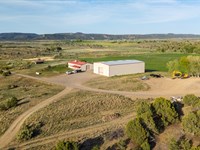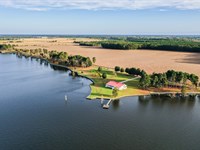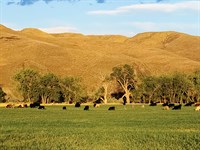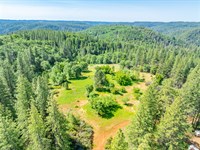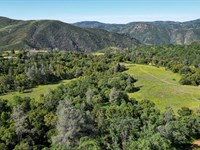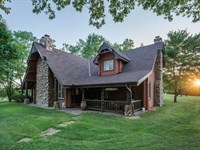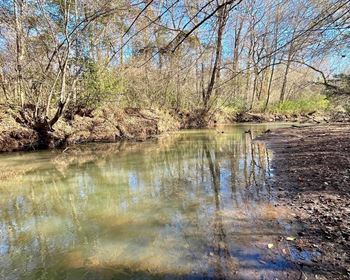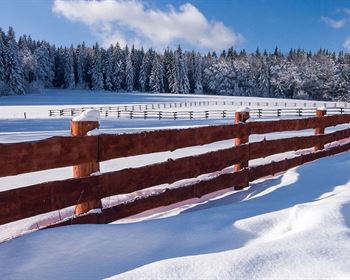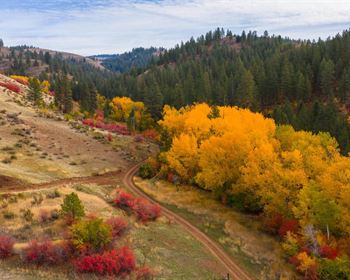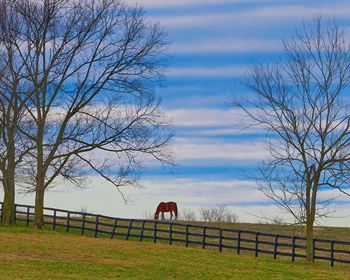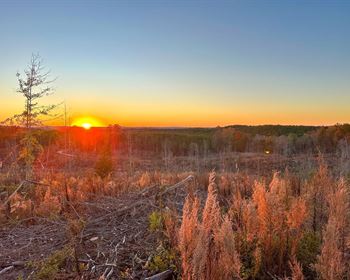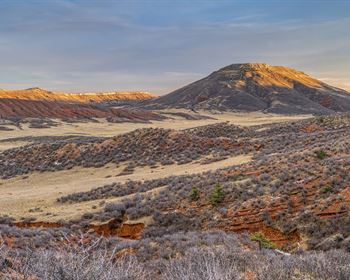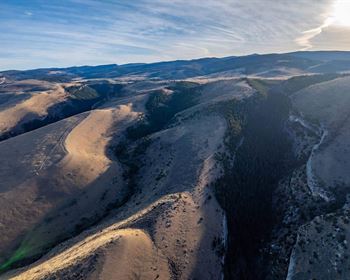The Dunes Subdivision
10 Lakeview Road : Brule, NE 69127
Keith County, Nebraska
Farm Description
The Dunes Subdivision is a wonderful 740 +/- acre gated subdivision on beautiful Lake McConaughy.
The Seller will consider selling the property in it's entirety or will sell individual lots starting at $65,000 for a 2 +/- acre lot.
With everything going on in Ogallala and Keith County, this is a tremendous opportunity for a seasoned developer.
The Dunes is on the south side of Lake McConaughy with 1 1/4 miles of lake frontage.
Land
740 +/- acres of land partially subdivided.
The Dunes Subdivision consists of beautiful rolling sandhills on the south side of Lake McConaughy that has been partially developed. There are currently 4 separate areas that have been platted into 75 individual lots ranging in size from approximately 2 +/- acres to 5 +/- acres. The Dunes lots, the Country Estates lots, the Lighthouse Ranchettes lots and The Sands lots. Of the 740 +/- total acres, approximately 2/3 of the remaining land is a clean slate to be developed as seen fit with the potential for additional recreational opportunities.
The Dunes lots which are the waterfront lots of this subdivision on Lake McConaughy will remind you a lot of the Outer Banks of N. Carolina with their beautiful sand dunes rolling off into the white sand beaches. The Lighthouse Ranchettes and Country Estates are slightly more to the interior of the subdivision and The Sands lots have been designed as more entry level lots and also opportunity for multi-family builds.
Plat maps showing the available lots and the individual lot prices are available upon request from the listing Broker.
Improvements
Main roads, electrical service, fiber optic lines and some water wells are in place.
Recreation
Lake McConaughy, the recreational jewel of western Nebraska, is the largest lake in the state with over 100 miles of shoreline, 35,700 surface acres of water, 24 miles long, 4 miles wide, and is famous for its white sand beaches. Each year, thousands of boaters, campers and outdoor enthusiasts make the Lake McConaughy area their destination for fun.
In addition to Lake McConaughy which is fed by the North Platte River, you have Lake Ogallala at 320 surface acres the little lake nestled below Kingsley Dam the 2nd largest earthen dam in the world. These two bodies of water provide endless opportunities for anglers of any skill level, young and old. The vast variety of fish you can catch between these two lakes include Walleye, White Bass, Stripers, Wipers, Catfish, Northern Pike, Smallmouth Bass, Yellow Perch, Rainbow & Brown Trout. Lake McConaughy can accommodate virtually every type of watercraft you can imagine.
Lake McConaughy and the North Platte River Valley also provide tremendous opportunities for hunters. This area is famous for duck and goose hunting. In addition to waterfowl hunting there is small game, varmints, White Tailed Deer, Mule Deer, and Pronghorn in the area.
Agriculture
N/A
Water/Mineral Rights & Natural Resources
All appurtenant water rights associated with this property will transfer to the Buyer s at Closing.
General Operations
The Dunes Subdivision is a planned development with tremendous opportunity.
Region & Climate
Keith County, Nebraska gets 20 inches of rain, on average, per year. The US average is 38 inches of rain per year.
Keith County averages 27 inches of snow per year. The US average is 28 inches of snow per year.
On average, there are 224 sunny days per year in Keith County. The US average is 205 sunny days.
Keith County gets some kind of precipitation, on average, 68 days per year. Precipitation is rain, snow, sleet, or hail that falls to the ground. In order for precipitation to be counted you have to get at least.01 inches on the ground to measure.
Weather Highlights
Summer High the July high is around 89 degrees
Winter Low the January low is 14
Rain averages 20 inches of rain a year
Snow averages 27 inches of snow a year
Information provided by Geography is often destiny. It has always been so with Ogallala, a town that came into existence at the junction of the major routes of the transcontinental migrations and of the cattle trails north from Texas.
From 1870 to 1885, Ogallala was the gateway of the Northern Plains. Hard-bitten Wyoming and Montana cattlemen met in Ogallala's hotel and saloons with Texas cattle kings and bargained over cattle prices. Gold flowed freely across the table, liquor across the bar, and occasionally blood across the floor as a bullet brought some unlucky cowhand to his death on the floorboards of Tuck's Saloon.
The first non-native visitors to this area were the trappers from St. Louis.
Next came the pioneers who followed the Oregon Trail. To protect them, the government established forts at intervals along the trail. Then came the Union Pacific Railroad. It is assumed that Ogallala had its beginning about 1867. Settlers started to follow the railroad west, and the cattlemen started driving their cattle to Ogallala to be shipped east or to be sold to Montana and Wyoming ranchers.
Ogallala's early history was unspectacular, promising to be nothing but a section house and water tank for the railroad. Then, in the spring of 1868, three men appeared to set the destiny of Ogallala. These men were the Lonergan brothers and Louis Aufdengarten. The Lonergan brothers came to do construction work for the Union Pacific Railroad. They found the plains to their liking, and subsequently became interested in Ogallala.
By 1876, Ogallala had changed little from its infant days in 1868. The stores were all south of the railroad tracks, and fronted what was called Railroad Street and the trail leading south to the Platte River. Along this trail extended the rest of the town. The town consisted of saloons with such names as The Cowboy's Rest and the Crystal Palace. The last building on the street was the Ogallala House - dining room widely patronized because of its excellent fare. It was run by S.S. Gast.
By 1880, Ogallala consisted of one courthouse, one school, one hotel, two dwelling houses, and twenty-five permanent residents. The tempo of living in early Ogallala changed with the seasons. During the months of winter and early spring life was drab and dreary. Shortly after the first of June the town began to hum with activity as the first Texas trail herds started to arrive. During the three summer months business boomed - ten to twelve herds, each of two hundred or more trail hands taxed the facilities of Ogallala. Sleeping rooms and meals were hard to find when the trail hands were in town. Activities in Ogallala continued at a fever pitch until the end of August, by then the Texans were heading back to Texas by November Ogallala had settled back in quiet and peaceful repose.
Ogallala's population of floaters, gamblers, trades-people and dance hall hostesses drifted to Omaha or Cheyenne to spend the winter. One hotel, one supply house and a single saloon remained open for the winter. The community sank into a state of inanimation until next spring.
In 1882-1884, the settlers and farmers reached Ogallala. These men were encouraged by the Union Pacific Railroad because the railroad started selling their land at quite low prices.
A serious epidemic of Texas fever swept over Nebraska during the summer of 1884. The disease first appeared near Ogallala in July apparently being brought in by Texas cattle. The disease spread quickly and it caused very heavy losses to the cattlemen. The ranchers had started to put expensive blooded bulls in their herds. These ranchers demanded that Texas cattle be excluded from Nebraska. This ban of Texas cattle was a damaging blow to the Texas trail herd business. This was the end of the trail period of Ogallala, as the wild, often violent town became a peaceful farmer's settlement.
Location
The Dunes Subdivision is approximately 15 minutes from Ogallala and Interstate I-80, 3.5 hours northeast of Denver, CO, 4.5 hours west of Omaha, NE and 2 hours east of Cheyenne, Wy
This property is minutes away from the lake's famous white sands beaches, popular boat ramps, convenience stores, many restaurants and bars.
More Farm Details
More Farms from Hayden Outdoors
 5,582 AC : $29.9M
5,582 AC : $29.9M 1,222 AC : $9.4M
1,222 AC : $9.4M 558.3 AC : $1.7M
558.3 AC : $1.7M 60 AC : $3.58M
60 AC : $3.58M 114.7 AC : $2.5M
114.7 AC : $2.5M 125.5 AC : $2.2M
125.5 AC : $2.2M 263.5 AC : $1.9M
263.5 AC : $1.9M 591.3 AC : $20M
591.3 AC : $20M 7,074.5 AC : $14.15M
7,074.5 AC : $14.15M 251.5 AC : $950K
251.5 AC : $950K 472.7 AC : $885K
472.7 AC : $885K 91.1 AC : $2.9M
91.1 AC : $2.9M

